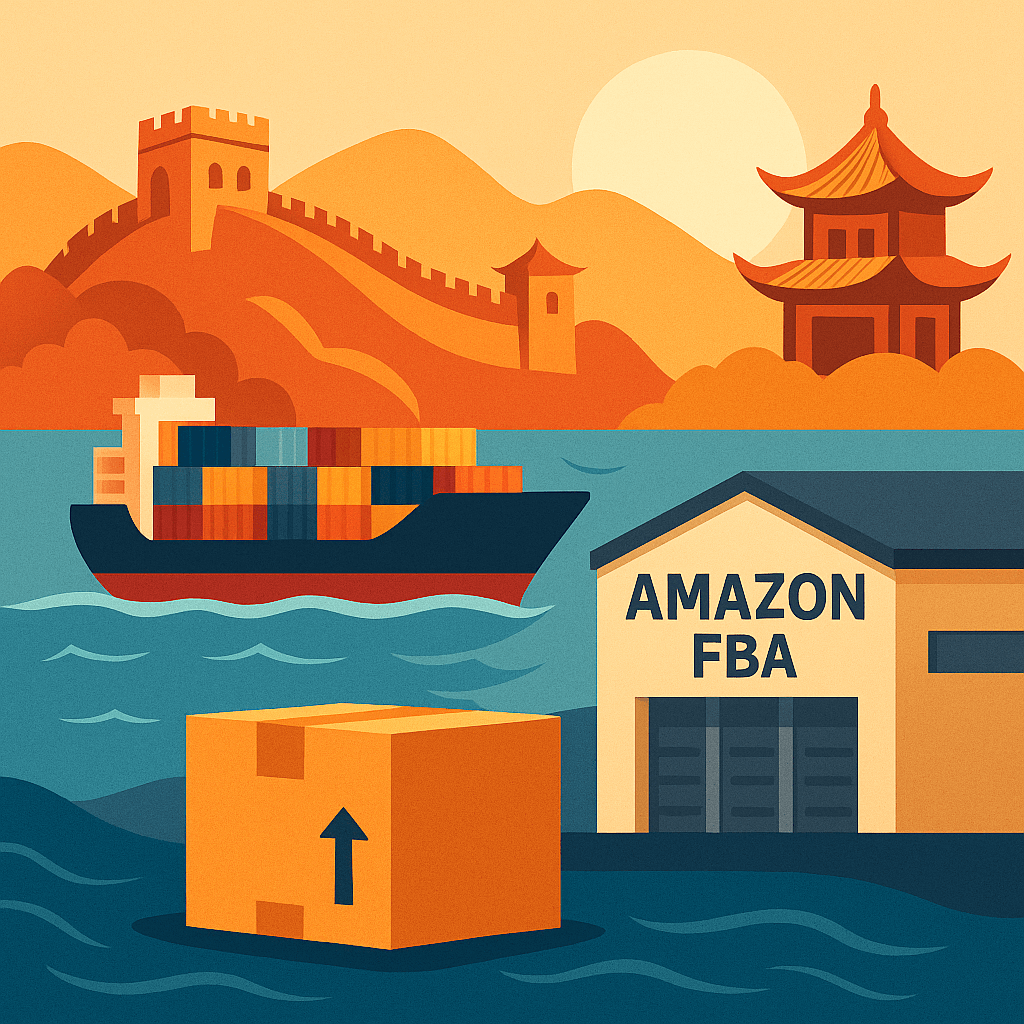Understanding Shipping Options
Express courier
Air freight
Ocean freight
Emerging trends in freight services
Step‑by‑Step Process to Ship from China to Amazon FBA
Add Your Heading Text Here
- Create an Amazon seller account – Register for a Seller Central account in the U.S. marketplace. Once approved, you can create FBA shipments.
- Find a reliable supplier – Source products from reputable factories or platforms in China such as Alibaba or 1688. Ensure they understand Amazon’s quality requirements.
- Create product listings and shipment plans – Use Seller Central to list products, assign FNSKU barcodes and generate shipping plans.
- Place your order – Arrange production and communicate packaging requirements to your supplier.
- Hire an experienced freight forwarder – Select a freight forwarder familiar with Amazon FBA. They will pick up goods, coordinate labeling, packing, palletizing and ship them to the designated FBA warehouse.
- Prepare for customs clearance and delivery – Provide the forwarder with necessary documents (commercial invoice, packing list, bill of lading) and track the shipment until Amazon receives and checks in your products.
Evaluate Amazon FBA policy updates
Amazon periodically adjusts its FBA policies and fee structures. In early 2024, for example, Amazon introduced inbound placement service fee changes that affect how inventory is distributed across fulfillment centers. The new fees reward sellers who allow Amazon to distribute inventory across multiple warehouses, while opting to send all units to a single warehouse incurs higher costs. Review the latest FBA inbound placement fees and assess how they impact your margins before creating a shipment. Sellers shipping from China may benefit from using distribution services that spread inventory across West and East Coast warehouses to reduce long‑distance transfers and placement fees.
Choose a freight forwarder carefully
A good freight forwarder does more than book cargo space: they act as your logistics partner. When evaluating potential forwarders, consider the following:
- Experience with Amazon FBA: Forwarders familiar with Amazon rules can ensure cartons meet size and weight limits and that paperwork is properly completed.
- Transparent pricing: Request detailed quotes that list freight costs, customs brokerage, fuel surcharges and any potential storage or demurrage fees.
- Track record and references: Check customer reviews or ask for referrals, and verify the forwarder’s licenses and insurance.
- Value‑added services: Many forwarders offer pre‑shipment inspections, cargo insurance, consolidation services and real‑time tracking—features that help you comply with Amazon’s requirements and maintain inventory integrity.
FBA Prep and Packaging Requirements
Amazon requires that each unit be individually packaged and labeled so that warehouse staff can easily scan and identify products. Key points include:
- Unique FNSKU labels: Each product must carry a unique Fulfillment Network Stock Keeping Unit (FNSKU) label. The FNSKU corresponds to the product listing and ensures that Amazon tracks your inventory accurately.
- Sold‑as‑set labeling: If you bundle items, seal the set together and label it clearly as “Sold as a set” or “Do not separate”.
- Poly bag requirements: When using poly bags, comply with Amazon’s guidelines:
- Poly bags with openings of 5 inches or larger must display a suffocation warning printed on the bag or on a label.
- The warning text size depends on the bag’s combined length and width; for example, bags with a combined length plus width of 60 inches or more require 24‑point font.
- Bags must be at least 1.5 mils thick, transparent and fully sealed.
- Each bag must either allow scanning of the product barcode through the plastic or have an external barcode label.
Outsourcing prep to a third‑party service in China can simplify the process; they will ensure proper labeling, bagging and carton identification.
Customs & Documentation
To import goods from China, you’ll need to prepare a complete set of documents for customs clearance. A typical shipment requires the following:
- Bill of Lading (BOL) – issued by the carrier as evidence of the contract of carriage.
- Certificate of Origin (CO) – certifies where the goods were manufactured.
- Packing List – details the contents of each carton.
- Commercial Invoice (CI) – indicates the value, quantity and description of goods.
- Customs Declaration (CD) – submitted to customs authorities for clearance.
Many sellers choose Delivered Duty Paid (DDP) terms, where the freight forwarder handles customs clearance and pays import duties on behalf of the seller All products and cartons must clearly state “Made in China,” and sellers should declare the actual product value and correct commodity name to avoid delays or penalties.
Cost Considerations & Tips
- Shipment size and weight – Larger volumes enjoy lower unit costs, but small parcels may benefit from express or air services.
- Freight type – Air freight is faster but more expensive; sea freight offers lower per‑unit cost but slower transit time.
- Delivery service level – Expedited services carry higher fees.
- FBA warehouse location – Shipping to West Coast warehouses (e.g., Los Angeles) often reduces freight charges because of shorter distances.
- Consolidate multiple suppliers’ products into a single shipment.
- Use Less‑Than‑Container Load (LCL) sea freight for moderate volumes or Full‑Container Load (FCL) for large volumes.
- Plan shipments in advance to avoid expedited charges and account for manufacturing lead times.
Best Practices & Compliance
- Honest declarations: Declare product value at cost and use accurate commodity descriptions. Undervaluation can trigger inspections and fines.
- Mark “Made in China”: Ensure both products and cartons carry origin labels.
- Avoid prohibited goods: Items such as food, liquids or dangerous goods require specific licenses. Provide necessary certifications (FDA, EPA, DOT, CE, etc.) for regulated products.
- Work with experienced professionals: Choose freight forwarders and prep services familiar with Amazon FBA guidelines. They will ensure correct labeling, poly‑bagging, carton labeling and timely customs clearance.
